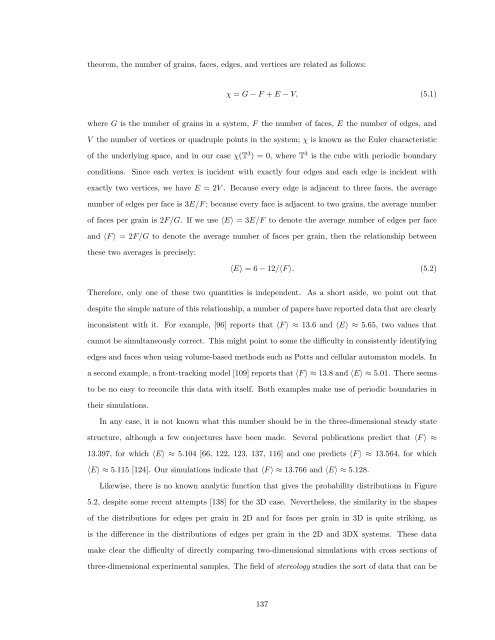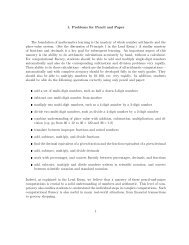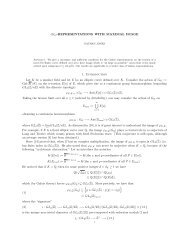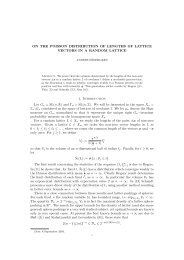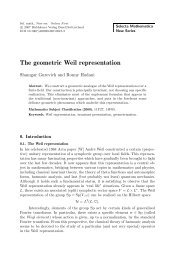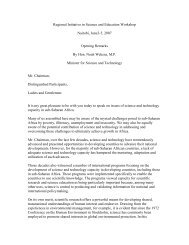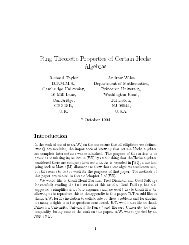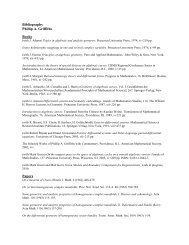Comparing 2D and 3D Systems - IAS
Comparing 2D and 3D Systems - IAS
Comparing 2D and 3D Systems - IAS
You also want an ePaper? Increase the reach of your titles
YUMPU automatically turns print PDFs into web optimized ePapers that Google loves.
theorem, the number of grains, faces, edges, <strong>and</strong> vertices are related as follows:χ = G − F + E − V, (5.1)where G is the number of grains in a system, F the number of faces, E the number of edges, <strong>and</strong>V the number of vertices or quadruple points in the system; χ is known as the Euler characteristicof the underlying space, <strong>and</strong> in our case χ(T 3 ) = 0, where T 3 is the cube with periodic boundaryconditions.Since each vertex is incident with exactly four edges <strong>and</strong> each edge is incident withexactly two vertices, we have E =2V . Because every edge is adjacent to three faces, the averagenumber of edges per face is 3E/F ; because every face is adjacent to two grains, the average numberof faces per grain is 2F/G. If we use E =3E/F to denote the average number of edges per face<strong>and</strong> F =2F/G to denote the average number of faces per grain, then the relationship betweenthese two averages is precisely:E =6− 12/F . (5.2)Therefore, only one of these two quantities is independent.As a short aside, we point out thatdespite the simple nature of this relationship, a number of papers have reported data that are clearlyinconsistent with it. For example, [96] reports that F ≈13.6 <strong>and</strong> E ≈5.65, two values thatcannot be simultaneously correct. This might point to some the difficulty in consistently identifyingedges <strong>and</strong> faces when using volume-based methods such as Potts <strong>and</strong> cellular automaton models. Ina second example, a front-tracking model [109] reports that F ≈13.8 <strong>and</strong> E ≈5.01. There seemsto be no easy to reconcile this data with itself. Both examples make use of periodic boundaries intheir simulations.In any case, it is not known what this number should be in the three-dimensional steady statestructure, although a few conjectures have been made.Several publications predict that F ≈13.397, for which E ≈5.104 [66, 122, 123, 137, 116] <strong>and</strong> one predicts F ≈13.564, for whichE ≈5.115 [124]. Our simulations indicate that F ≈13.766 <strong>and</strong> E ≈5.128.Likewise, there is no known analytic function that gives the probability distributions in Figure5.2, despite some recent attempts [138] for the <strong>3D</strong> case. Nevertheless, the similarity in the shapesof the distributions for edges per grain in <strong>2D</strong> <strong>and</strong> for faces per grain in <strong>3D</strong> is quite striking, asis the difference in the distributions of edges per grain in the <strong>2D</strong> <strong>and</strong> <strong>3D</strong>X systems. These datamake clear the difficulty of directly comparing two-dimensional simulations with cross sections ofthree-dimensional experimental samples. The field of stereology studies the sort of data that can be137


